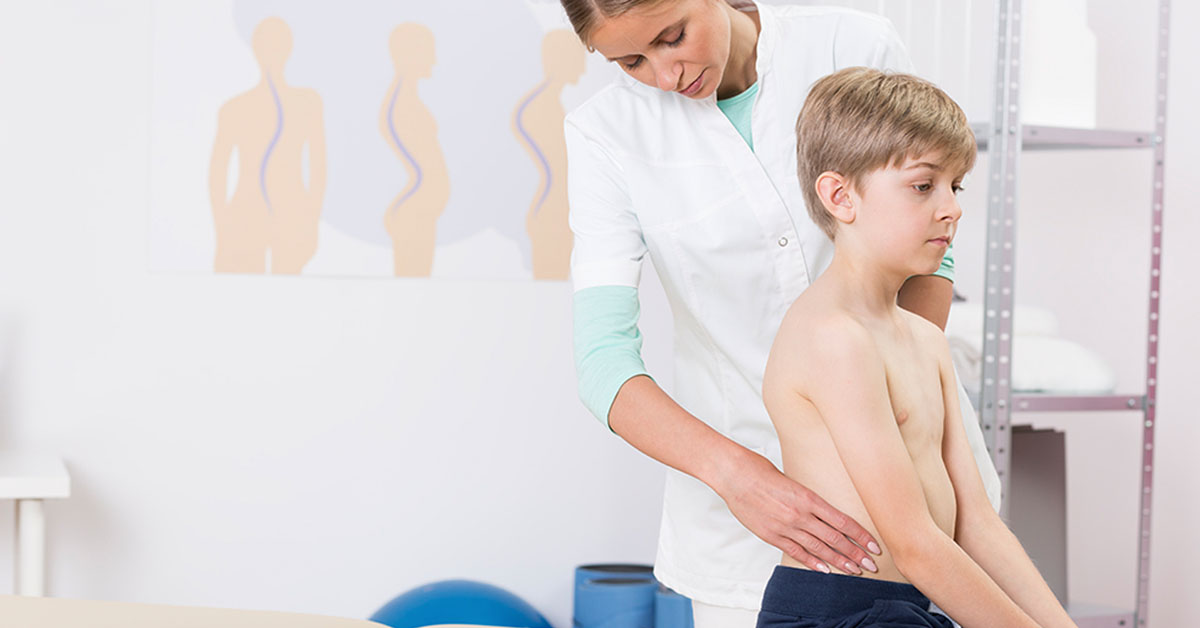
Pediatric Idiopathic Scoliosis Diagnosis And Treatment
Scoliosis is a musculoskeletal disorder that adversely affects the shape of the spine (backbone). A scoliotic spine (when viewed from behind) will not be straight and may instead look like the letter "C" or "S" due to the side-to-side (right-to-left) curvature. Idiopathic scoliosis is the most common type of pediatric scoliosis. Idiopathic simply means of unknown origin; therefore, idiopathic scoliosis means that the exact cause of scoliosis is not known (i.e., there is no clear cause).
How is Pediatric Idiopathic Scoliosis Diagnosed?
Regardless of the type of idiopathic scoliosis, early diagnosis is of primary importance. Remember that in order to diagnose scoliosis as idiopathic all other causes must be ruled out; therefore, extensive examination and testing may be required. The following are used to evaluate patients for pediatric scoliosis:
Medical History
This includes an interview with a doctor and a review of the patient's medical records and family history of scoliosis. These are done in order to determine the presence any medical conditions that may be causing the spine curvature.
Physical Examination
A portion of the exam will be done while the patient is bending forward (called the Adam's Forward Bend Test) as this position makes it easier to visualize certain irregularities.
Items that will be looked for during the exam include:
- Shoulders are not level (one shoulder is higher than the other)
- If the head is centered
- One side of the rib cage is higher than the other
- Pelvis is tilted/uneven
- Significant asymmetry between opposite sides of the body
- Certain changes in the skin (e.g., cafe au lait spots)
Imaging Studies
Patients with abnormal spinal curves typically need imaging studies. These may include full-length X-rays, CT scans, or an MRI of the spine. Which of these imaging studies will depend on what conditions are suspected to be involved in causing the scoliosis. The standard method for assessing the curve is to measure the amount (severity) of the curve. This is technically called the Cobb angle. This measurement is determined from an X-ray of the spine. Abnormal curves measuring less than 10 degrees are not formally classified as scoliosis.
How is Pediatric Idiopathic Scoliosis Treated?
Treatment of idiopathic scoliosis depends on many factors, including:
- Patient's age
- Location of the curve
- Shape of the curve
- Severity of the curve (i.e., the Cobb angle)
Many patients with very mild idiopathic curves do not need treatment. However, they should be monitored by a doctor on a regular basis. Pediatric scoliosis treatment involves both surgical and non-surgical options. Non-surgical treatment of pediatric scoliosis is focused on slowing or preventing progression of the curve, as well as on cosmetic improvement.
Observation
For patients with smaller idiopathic curves, generally 20 degrees or less, observation may be the course of treatment. Patients are monitored and re-examined regularly, approximately every 4-6 months.
Bracing
Bracing can be effective for certain patients with idiopathic curves of approximately 20-40 degrees. However, not all pediatric patients with curves in this range will be candidates for bracing; other factors must be considered. The brace is worn to prevent the curve from getting worse. There are different types of braces available. The type of brace will depend on several factors including the size and location of the curve.
Physical Therapy
Physical therapy may be used as part of a scoliosis treatment plan. The goal of physical therapy is strengthening (especially core strengthening) and symptom relief.
Emotional Support
Pediatric patients may be self-conscious of their posture or their appearance when wearing a back brace, and therefore may benefit from a formal support group.
Surgery
Sometimes non-surgical treatments fail to work or are not an option and, therefore, surgery is required. The goal of pediatric scoliosis surgery is to correct the curve as much as possible.
The decision to surgically correct pediatric scoliosis is based on several factors including:
- Severity of the curve (generally curves greater than 45-50 degrees)
- Rate at which the curve is progressing (getting worse)
- Patient's symptoms and overall health status
- Patient's age
A surgeon may use growth rods or perform a spine fusion. There are also different ways to perform pediatric scoliosis surgery. It is understandable that patients may want to avoid surgery; however, if left untreated, a curve that progresses can eventually adversely affect heart and lung function.
Alternative Treatments for Pediatric Idiopathic Scoliosis
According to the Scoliosis Research Society: "Alternative treatments to prevent curve progression or prevent further curve progression such as chiropractic medicine, physical therapy, yoga, etc. have not demonstrated any scientific value in the treatment of scoliosis. However, these and other methods can be utilized if they provide some physical benefit. These should not, however, be utilized to formally treat the curvature in hopes of improving the scoliosis."

